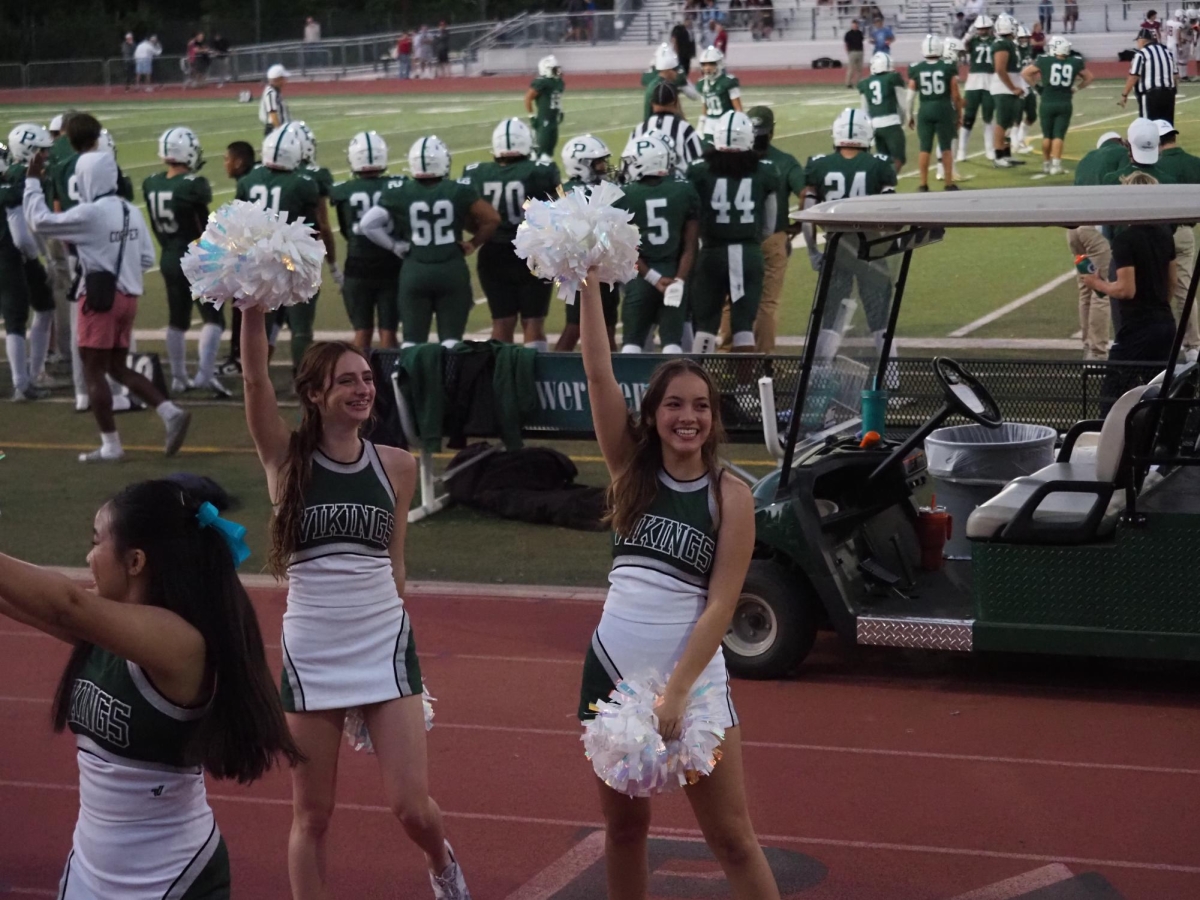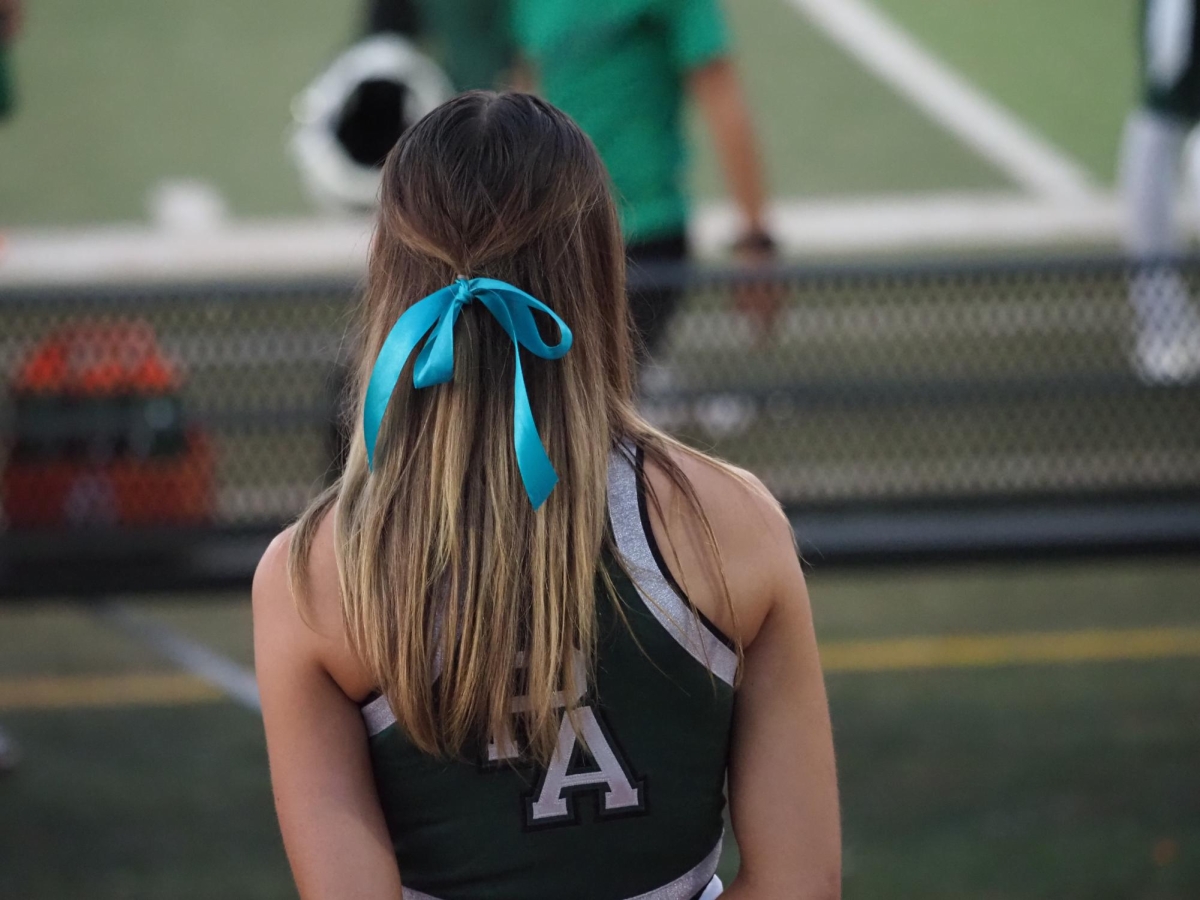As I stepped out of the car at Palo Alto High School before the first football game of the season, I hesitated for a moment.
What if our stunts fall? What if someone gets hurt?
However, as I tried to come up with answers to these questions, I came to a realization: Despite the inevitable what-ifs, I didn’t feel nervous at all.
I wanted to perform well for myself and my team, but for what felt like the first time in my high school career, I wasn’t focused on what other people were going to think about me.
I felt so calm getting out of the car that day, it was almost anxiety-inducing.
I joined cheer my sophomore year because the past two years of my life revolved only around school, and I was in a place of desperation, longing for something that would get me up in the morning.
Having goals to work towards and people who supported me took my mind off of school and my home life, getting me through the end of the year.
After joining, I quickly became close with my team.
The intense practices, thrilling performances and endless support from teammates created long-lasting friendships that have extended both on and off the mat and field.
“It’s incredibly rewarding to witness [the cheerleaders’] dedication, teamwork and determination as they master new skills and come together as a tight-knit squad,” coach Lea Santini told me. “The bonds we create and the sense of pride they feel during performances make all the hard work worthwhile.”
So when people ask, why cheer? It sometimes confuses me.
I find myself thinking, why not cheer?
I get it – I really do. Living in a society that objectifies women for almost anything has left many, including myself, wondering if the sport does just that, and questioning its purpose.
Media portrayal of cheerleading has especially fed into misconceptions that emphasize stereotypes, and generate the idea that the sport is exclusively tailored for an exclusive group of snobby girls who walk with their noses in the air.
But when people choose to focus on the non-athletic aspects of cheerleading, such as the uniforms or media representation, it dehumanizes cheerleaders and undermines the reputation of the sport as a whole.
“People only see the sparkly pom poms and the uniforms,” co-captain Lily Jefferey said. “They don’t see the physical work that goes into the sport.”
“In reality, modern cheerleading is an intense sport that requires a high level of physical fitness, strength, flexibility, and coordination,” Santini said.
So when classmates shoot dirty looks at my uniform, question the morals of cheerleading, or insinuate it isn’t even a sport to begin with.
I remind myself of all the things cheer has instilled in me, how it’s shaped me into the person I am today, and why I continue to stay.
When people say ‘It just doesn’t seem like you,’ I don’t tell them “Actually, my true passion is yelling P-A-L-O-A-L-T-O for a mainly unresponsive student section,” or “You’ve got it all wrong, waving my poms to the backs of stern-faced football players empowers me.”
I instead find myself defending the sport, wondering what is so hard to believe.
I’ll tell them that participating in cheer has brought out the extroverted side of me that I had suppressed for so long I didn’t even know it was there.
I’ll tell them about the rush of adrenaline and excitement after my group finally masters a new stunt, how much I’ve grown athletically and as a person and the amount of support I’ve received from my team along the way.
I’ll tell them how it’s impossible not to smile as soon as I step out on to the field.
I’ll describe how the world seems to hold its breath with me while the stadium lights flicker on.
I’ll struggle to articulate the feeling that I am exactly where I am supposed to be. That for once, I’m not worried about standing out, because that’s exactly what I’m going to do.
And when the sun dips below the horizon and the music starts, I feel more like myself than I have in years.






